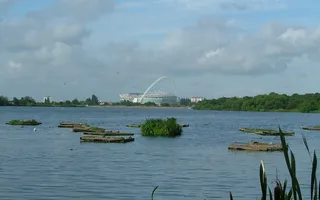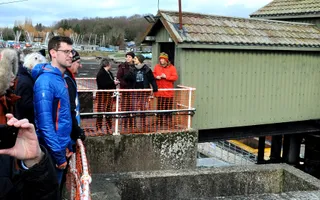The Welsh Harp Brent Reservoir was built in 1835 to supply water to the Grand Union Canal. As well as being a place for sailing, watersports and walking, the reservoir is protected as a Site of Special Scientific Interest (SSSI) for the rich diversity of wildlife found on site, including water birds and 16 protected plant species.
Following statutory winter repairs and maintenance work, supported with funding raised by players of People’s Postcode Lottery, the reservoir has now almost re-filled to its normal level.
Urban wild spaces
Ben McMillan, one of our ecologists for London & South East, explains: “The Welsh Harp Brent Reservoir is one of London’s most significant urban wild spaces and provides a much valued area of green open space for people and wildlife.
“As part of a series of environmental improvements at the reservoir, and with the support of the Welsh Harp Conservation Group, and thanks to supporters of our Welsh Harp Brent Reservoir crowd funding campaign, we’re installing 14 new island habitats for common terns, one of the species of water bird that lives there and cited within the reservoir’s SSSI designation.
“Sadly, numbers of these silvery grey and white birds nick-named the ‘sea-swallow’, have been significantly declining in recent years. In the past, over 40 breeding pairs have been present, but in 2023 only two birds successfully reared chicks. The island habitats we’re installing will provide a safe space from flooding and predators for the birds, hopefully improving their breeding success. The islands are made of durable recycled plastic with a layer of shingle to imitate the tern’s natural beach nesting habitat.”







